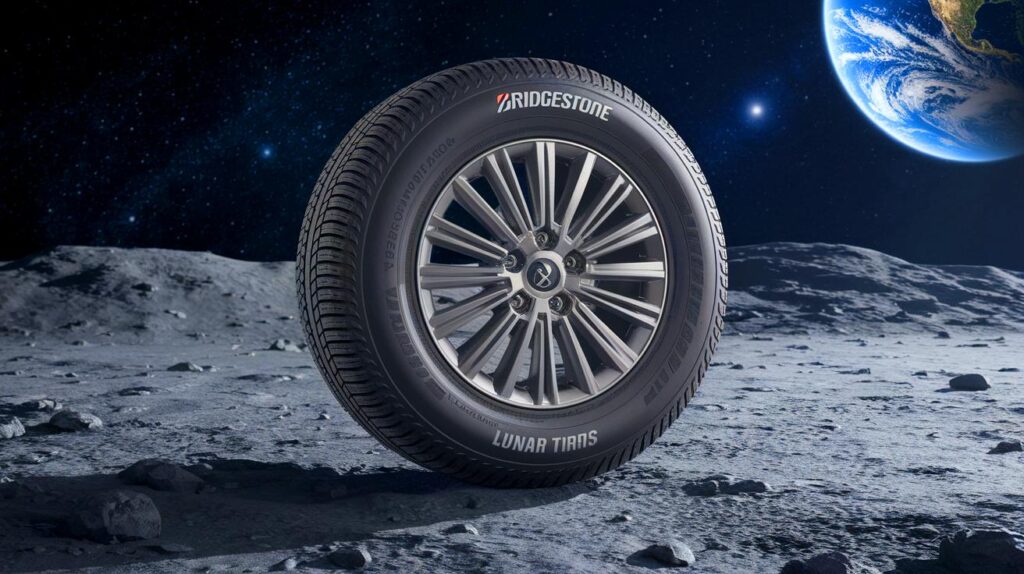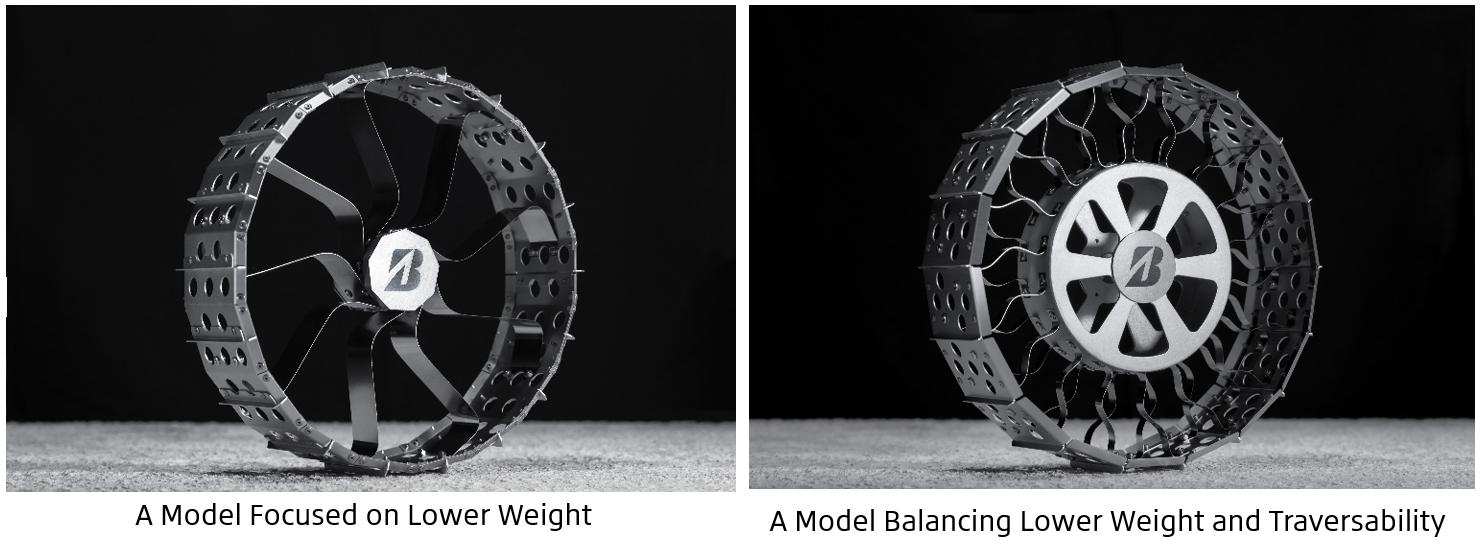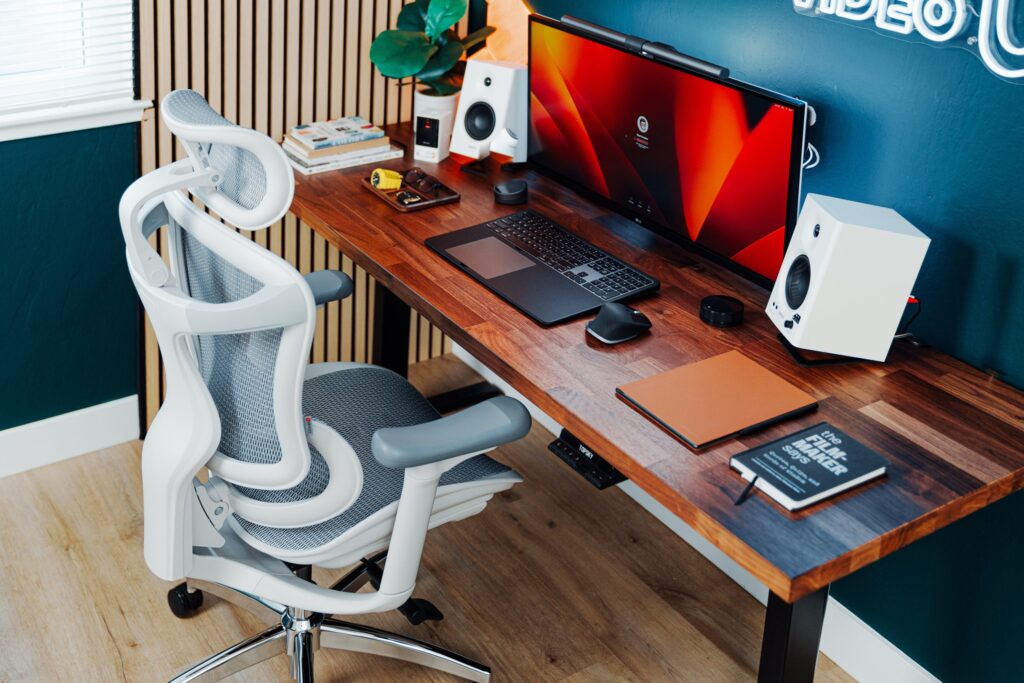| In Brief |
|
Bridgestone, with over 90 years of experience in terrestrial tires, is now focusing on innovation for space mobility. The company recently unveiled a next-generation lunar rover tire concept, specifically designed to navigate the Moon’s rugged terrain. This new design addresses the challenges presented by the extreme lunar environment, including severe temperature fluctuations and high levels of ultraviolet radiation, which render traditional rubber tires unsuitable.
A Metallic Revolution for Lunar Exploration
The lunar rover tire concept from Bridgestone, recently presented, is based on an innovative metallic structure. Unlike traditional rubber tires, these wheels are built to withstand the hostile conditions found on the lunar surface. Metal replaces rubber due to its durability and ability to endure extreme temperatures and the vacuum of space, where air-filled tires would be ineffective.
Bridgestone showcased these innovations at the 40th Space Symposium in Colorado Springs. The tire design features a durable metal tread and flexible support structures, eliminating the need for traditional wheels. These tires are lighter with fewer spokes for small rovers, while a more robust version is planned for medium-sized rovers, achieving a balance between weight and durability necessary for challenging terrains.
Cutting-Edge Technologies for Space Mobility
The new lunar rover tires from Bridgestone build upon the second-generation model from 2024, which featured a flexible inner structure. The key difference lies in the tread design: whereas the 2024 version employed a mesh of steel wool in rectangular pads, the new designs showcase a evolution of materials and tread patterns.
This new structure utilizes technologies developed for the next-generation “Air Free” tire, incorporating thin metal spokes and splitting the tread segment in the direction of rotation to withstand the extreme lunar environment. Historically, the tires used in the lunar vehicles during the Apollo missions were made from a mesh of galvanized piano wire reinforced with riveted titanium strips in a chevron pattern, preventing the wheels from sinking into the lunar soil.
A Collaboration for Innovation
In 2024, Bridgestone partnered with Astrobotic Technology to develop lunar rover tires specifically for Astrobotic’s CubeRover 24U. This vehicle, roughly the size of a stove, is designed for operations on the lunar surface. By employing a skeletal structure with metal spokes and an elastic design, the tire can deform and effectively navigate lunar obstacles such as rocks.
Bridgestone continues to develop customizable tires according to specific client or mission needs, supporting safety, peace of mind, and the challenges of human development on the Moon. The insights gained from creating tires for the lunar environment will also be applied to enhance earth tire technology.
Impact on Earth Tire Technology
While the focus is on developing tires for the Moon, it is crucial to note the potential impact of these innovations on earth tire technology. Bridgestone’s collaboration with partners like Astrobotic could lead to significant advancements in tire design for extreme conditions on Earth, such as those encountered in motorsports.
Bridgestone’s space innovations may influence future generations of tires, integrating more sustainable materials and more flexible structures. The knowledge gained from adapting tires to the lunar environment could revolutionize how we design tires for terrestrial vehicles, thereby enhancing performance and security in the most challenging conditions.
Bridgestone is committed to leveraging its expertise to push the boundaries of tire technology, both on Earth and in space. These developments raise the question: how will these innovations shape our daily lives and the future of terrestrial mobility?








